Are you tired of waking up with a tangled mess on your head? Braids have long been hailed as a solution for keeping your hair neat and organized while you sleep. But is sleeping in braids really beneficial for your hair, or is it actually doing more harm than good? In this article, we’ll uncover the truth behind this popular hair care practice.
Some claim that sleeping in braids helps to promote hair growth and prevent breakage. Others argue that it can lead to traction alopecia and damage the hair shaft. So, which is it?
With a balanced and evidence-based approach, we will explore the potential benefits and drawbacks of sleeping in braids. We’ll examine the impact on hair health, the different types of braids to consider, and the best practices to follow for optimal results. By the end of this article, you’ll have a clearer understanding of whether sleeping in braids is a worthwhile hairstyling habit or one to avoid.
So, grab a cup of tea and join us as we unravel the truth behind sleeping in braids and its impact on your hair.
Benefits of Sleeping in Braids
1. Preventing Hair Tangling and Mess
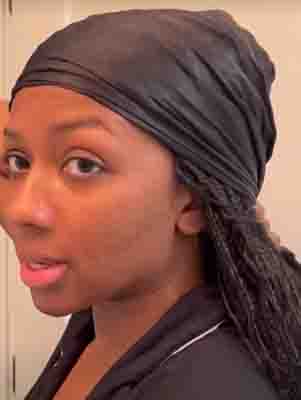
Sleeping in braids can be a game-changer for those looking to wake up with tangle-free hair. This technique effectively keeps your hair in place, preventing overnight tangling and the morning hair struggle.
This benefit is particularly valuable for individuals with long hair or curly textures, which are more prone to tangling.
2. Protection from Environmental Damage
Braiding your hair before bedtime acts as a protective shield against environmental damage and friction. Your hair is shielded from rubbing against your pillowcase or getting entangled with other objects.
This protective measure can significantly reduce breakage and split ends, contributing to the overall health of your hair.
3. Effortless Waves and Curls
One delightful perk of sleeping in braids is the effortless waves or curls it creates when you wake up.
This time-saving feature means you won’t have to spend as much time styling your hair in the morning. Simply unravel your braids, run your fingers through your hair, and you’re good to go!
4. Even Distribution of Pressure
Braids distribute pressure evenly across your hair, reducing excessive tension on specific strands.
This is especially beneficial for individuals with naturally curly, coily, or textured hair, as it helps maintain the integrity of these delicate hair types.
5. Moisture Retention
Sleeping in braids can help retain moisture in your hair. By keeping the strands together and minimizing exposure to your pillowcase, braids prevent moisture loss, leaving your hair better hydrated and less prone to dryness.
Potential Negative Effects of Sleeping in Braids
1. Hair Breakage and Damage
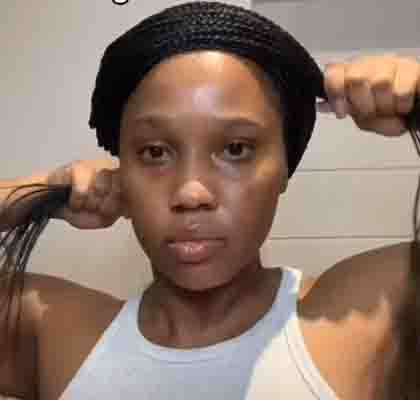
One of the potential negative effects of sleeping in braids is hair breakage and damage. The tension on hair follicles from tightly braided styles can strain and weaken the hair shafts.
Additionally, friction between the strands can further contribute to hair damage. To mitigate this risk, it’s crucial to ensure that your braids are not excessively tight, allowing for healthier hair growth.
2. Scalp Irritation and Discomfort
Sleeping in tightly braided styles can lead to scalp irritation and discomfort. The increased sensitivity of the scalp can result in irritation and inflammation, making it difficult to sleep comfortably.
Restricted blood flow to the scalp can cause itchiness and redness. Considering these potential consequences is essential when choosing to sleep in braids.
3. Hair Loss and Thinning
Another possible negative effect of sleeping in braids is hair loss and thinning. Traction alopecia is a common risk, as the pulling force from tight braids can damage hair follicles, leading to hair breakage and even permanent hair loss.
This constant tension can also cause a receding hairline, making the forehead appear larger. Over time, sleeping in braids may reduce hair density due to the continuous strain on the hair shafts.
Mitigating the Risks

To enjoy the benefits of sleeping in braids while minimizing these potential negative effects, consider the following tips:
- Choose Looser Braids: Opt for braids that are not overly tight to reduce tension on the hair follicles and minimize breakage.
- French Braid: The classic French braid is another popular choice for sleeping. It’s a versatile style that can be worn tight or loose, depending on your preference. French braids are known for their ability to keep hair secure and tangle-free.
- Two-Strand Twists: If you have textured or curly hair, two-strand twists can be a great option for sleeping. This style involves twisting two sections of hair around each other, creating a natural-looking, low-maintenance braid. It’s gentle on the hair and can help to preserve your natural curl pattern.
- Avoid Tight Hairstyles: Avoid hairstyles that pull the hair too tightly, as they can contribute to hair loss and discomfort.
- Proper Braiding Technique: Ensure that the braiding technique used is gentle and doesn’t put excessive stress on the hair.
- Regular Hair Maintenance: Care for your hair with regular moisturizing and conditioning to keep it healthy and resilient.
- Alternate Styles: Rotate between braided and loose hairstyles to give your hair a break from constant tension.
Tips for Maximizing the Benefits of Sleeping in Braids
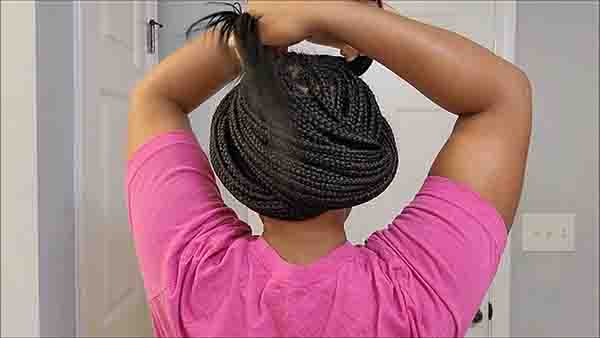
To ensure that you get the most out of sleeping in braids, here are some tips to keep in mind:
- Avoid tight braids: As mentioned earlier, tight braids can cause tension and lead to hair breakage or traction alopecia. Opt for looser braids that are comfortable to sleep in.
- Moisturize your hair: Before braiding your hair, make sure to moisturize it thoroughly. Apply a leave-in conditioner or natural oils to keep your hair hydrated while you sleep.
- Protect your edges: Your hairline is delicate and prone to breakage. When braiding your hair, be mindful of the tension on your edges and try not to pull too tightly.
- Use a satin or silk pillowcase: Cotton pillowcases can cause friction and lead to dryness and breakage. Switch to a satin or silk pillowcase to reduce friction and keep your hair moisturized.
- Alternate between braids and leaving your hair loose: Giving your hair a break from braids every once in a while can help prevent damage from constant tension. Alternate between braiding your hair and leaving it loose to maintain hair health.
By following these tips, you can enjoy the benefits of sleeping in braids while minimizing the potential risks. Now, let’s debunk some common misconceptions about sleeping in braids.
Debunking Common Myths About Sleeping in Braids
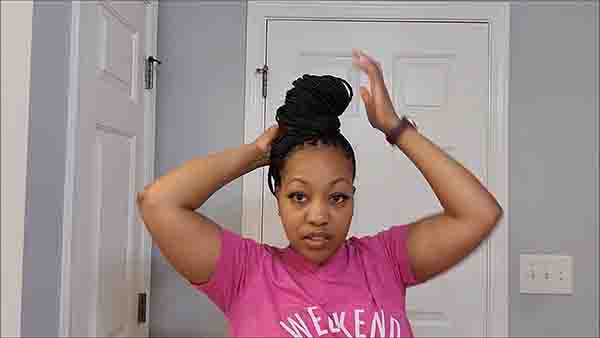
There are several misconceptions surrounding the practice of sleeping in braids. Let’s take a moment to debunk some of these myths:
- Myth 1: Sleeping in braids will make your hair grow faster. While sleeping in braids can help protect your hair from breakage and split ends, it does not directly promote hair growth. Hair growth is primarily determined by genetics, diet, and overall hair care practices.
- Myth 2: Sleeping in braids is the only way to maintain curly hair overnight. While braiding can help preserve your natural curl pattern, there are other methods you can try, such as using a satin bonnet or pineapple technique. Experiment with different methods to find what works best for your hair type.
- Myth 3: Sleeping in braids will completely eliminate tangles and knots. While braiding can help reduce tangling, it doesn’t guarantee a completely tangle-free experience. Factors such as hair texture, length, and the type of braid can still contribute to some level of tangling.
Now that we’ve debunked some common misconceptions, let’s hear from individuals who have personal experiences with sleeping in braids.
Personal experiences and testimonials
Sarah’s Success with Loose Braids
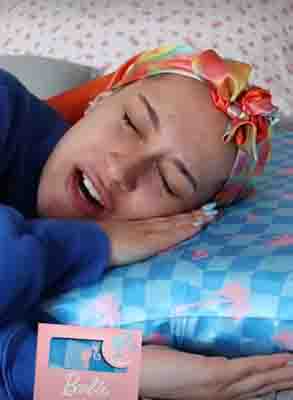
Sarah, a 28-year-old with long, straight hair, shares her positive experience with sleeping in loose braids: “I started sleeping in loose braids a few months ago, and I’ve noticed a significant reduction in tangles and breakage. My hair feels much healthier and easier to manage in the morning.”
Sarah’s testimony highlights the potential benefits of sleeping in braids for preventing tangling and breakage, especially for those with long hair.
Jessica’s Curly Hair Perspective
In contrast, Jessica, a 35-year-old with curly hair, offers a different perspective: “I tried sleeping in braids, but it made my curls lose their shape. I prefer using a satin bonnet to protect my curls overnight.”
Jessica’s experience illustrates that the impact of sleeping in braids can vary depending on hair texture and personal preferences. She found an alternative method that better suits her curly hair needs.
Expert Opinions
Dr. Jennifer Thompson’s Dermatological Insight
Dr. Jennifer Thompson, a dermatologist specializing in hair and scalp disorders, provides her expert opinion:
“Sleeping in braids can be beneficial for those with longer hair or curly textures, as it can help prevent tangling and breakage. However, it’s crucial to ensure that the braids are not too tight, as this can lead to traction alopecia.”
Dr. Thompson emphasizes the importance of proper braiding technique and avoiding excessive tension, especially for individuals with specific hair types.
Lisa Johnson’s Professional Recommendations
Hairstylist and trichologist, Lisa Johnson, offers her insights: “I often recommend sleeping in braids to my clients, as it helps protect their hair from friction and keeps it more manageable. However, it’s important to choose the right type of braid and avoid excessive tension on the scalp.”
Lisa highlights the potential benefits of sleeping in braids for overall hair management but stresses the importance of choosing the appropriate braid style and maintaining scalp health.
FAQ
Sleeping in braids can protect your hair from friction and reduce breakage, potentially aiding in hair growth. However, individual results may vary.
Braiding your hair at night can prevent tangles and minimize frizz, making it easier to manage your hair in the morning.
Braiding your hair before bed every night can be beneficial for preserving hairstyles and reducing damage from friction.
Sleeping with your hair in a loose braid or protective style can be healthier as it reduces friction and prevents tangles, which can lead to breakage.
To protect braids while sleeping, use a satin or silk pillowcase, avoid rough surfaces, and secure them in a loose braid or updo to prevent tangling.
Sleeping in a braid every night can help maintain hairstyles and protect your hair from damage, but it may not be necessary for everyone.
People braid their hair at night to prevent tangles, reduce friction, and maintain hairstyles, which can lead to healthier hair.
Sleeping on your back or with your head elevated can minimize friction and help protect braids while sleeping.
Braiding hair too tightly or leaving braids in for extended periods can lead to tension alopecia (hair loss due to tension), scalp issues, and potential breakage.
Sleeping with your hair braided can help prevent tangling, breakage, and frizz, resulting in healthier and more manageable hair.
Leaving braids in for too long can lead to issues like matting, tangling, and damage to the natural hair. Regular maintenance and takedowns are essential.
You can sleep without a durag with braids, but using a satin or silk pillowcase is recommended to protect the braids and reduce friction.
Braids can itch at night due to the accumulation of sweat, oil, or product residue on the scalp. Proper cleansing and maintenance can alleviate itching.
To wash hair with braids, dilute shampoo with water, apply it to the scalp, and gently cleanse. Rinse carefully without soaking the braids, and follow up with a leave-in conditioner.
Box braids can last 6 to 8 weeks or more with proper care, but the duration may vary depending on factors like braid size and maintenance.
Conclusion
To gain a deeper understanding of the potential benefits and drawbacks of sleeping in braids, let’s turn to the experts in the field of hair care and styling. Hairstylists and trichologists, who specialize in the study of hair and scalp disorders, can provide valuable insights into this practice.
According to some hairstylists, sleeping in braids can indeed help to protect the hair from damage and breakage. By keeping the hair contained and preventing it from rubbing against abrasive surfaces, such as cotton pillowcases, braids can minimize the risk of hair breakage caused by friction. This can be particularly beneficial for individuals with fragile or damaged hair.
On the other hand, some experts caution against sleeping in braids, especially if they are too tight or if the same style is worn consistently for long periods. This can lead to a condition known as traction alopecia, which is characterized by hair loss due to prolonged tension on the hair shaft. Traction alopecia can cause permanent damage to the hair follicles, leading to thinning hair or even bald patches in severe cases.
It’s important to strike a balance between the benefits and potential risks of sleeping in braids. If you choose to incorporate this practice into your hair care routine, consider opting for looser braids and varying the styles to minimize the risk of traction alopecia. Additionally, it’s crucial to listen to your hair and scalp. If you experience any discomfort, pain, or excessive hair shedding, it may be a sign that your braids are too tight or causing undue stress on your hair follicles.

